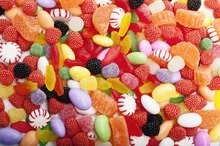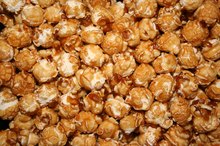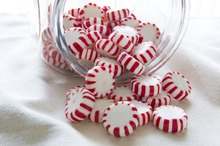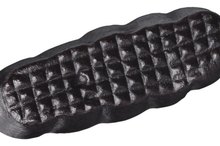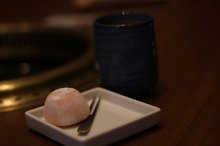Nutritional Information for Dubble Bubble Gum
Dubble Bubble is a brand of chewing gum invented in 1928 by Walter Diemer, an accountant at the Fleer Candy Company 2. Dubble Bubble came after several decades of failing to create a bubble gum that produced a large bubble and was not too sticky 2. In 2003, Dubble Bubble was purchased by Tootsie Roll Industries and is sold individually in twist wrappers, in king-size buckets, large and small gumballs, and a variety of other specialty creations and flavors 23.
Nutrition Facts
Dubble Bubble Ball Gum is available in 5 g servings containing 20 calories, 5 mg of sodium, 5 g of carbs and 4 g of sugars 2. Dubble Bubble specialty bubble-gum cigars come in 20 g servings and contain 70 calories, 18 g of carbs and 15 g of sugar 2. Dubble Bubble Office Pleasures bite-size gum pieces come in 3.5 g servings containing 15 calories, 3 g of carbs and 3 g of sugar 2.
Allergen Information
Nutritional Facts for Hubba Bubba Bubble Gum
Learn More
The American Academy of Allergy, Asthma and Immunology reports that 12 million Americans have food allergies 4. Top food allergies include peanuts and tree nuts. Celiac.com, a website about celiac disease, reports that at least 3 million Americans suffer intestinal damage when they eat foods containing gluten 5. Dubble Bubble gum products are nut-free, gluten-free, peanut-free and kosher 23.
Nutrients
Dubble Bubble does not contain any vitamins or minerals 2. So while it is low in calories and has no fat, there is also no nutritional benefit to eating this candy.
Ingredients
Laffy Taffy Candy Nutrition Facts
Learn More
Ingredients in Dubble Bubble gum include:
- dextrose
- corn syrup
- gum base
- tapioca dextrin
- titanium dioxide
- confectioners glaze
- carnauba wax
- cornstarch
- artificial flavors
- colors 2
Based on the two ingredients in the top positions on the nutrition label, sugar makes up the majority of this product.
Sugar
There is no recommended daily allowance for sugar. According to the website for the Anne Collins weight-management program, Americans should consume fewer than 40 g of sugar a day.
Weight
Kathleen Melanson, an associate professor of nutrition and food sciences at the University of Rhode Island, theorizes that chewing gum may help reduce caloric intake. In the study, participants who chewed gum for one hour in the morning consumed 67 fewer calories at lunch and did not overeat later in the day to compensate for the lost calories.
Related Articles
References
Writer Bio
Shannon Marks started her journalism career in 1994. She was a reporter at the "Beachcomber" in Rehoboth Beach, Del., and contributed to "Philadelphia Weekly." Marks also served as a research editor, reporter and contributing writer at lifestyle, travel and entertainment magazines in New York City. She holds a Bachelor of Arts in literature from Temple University.




